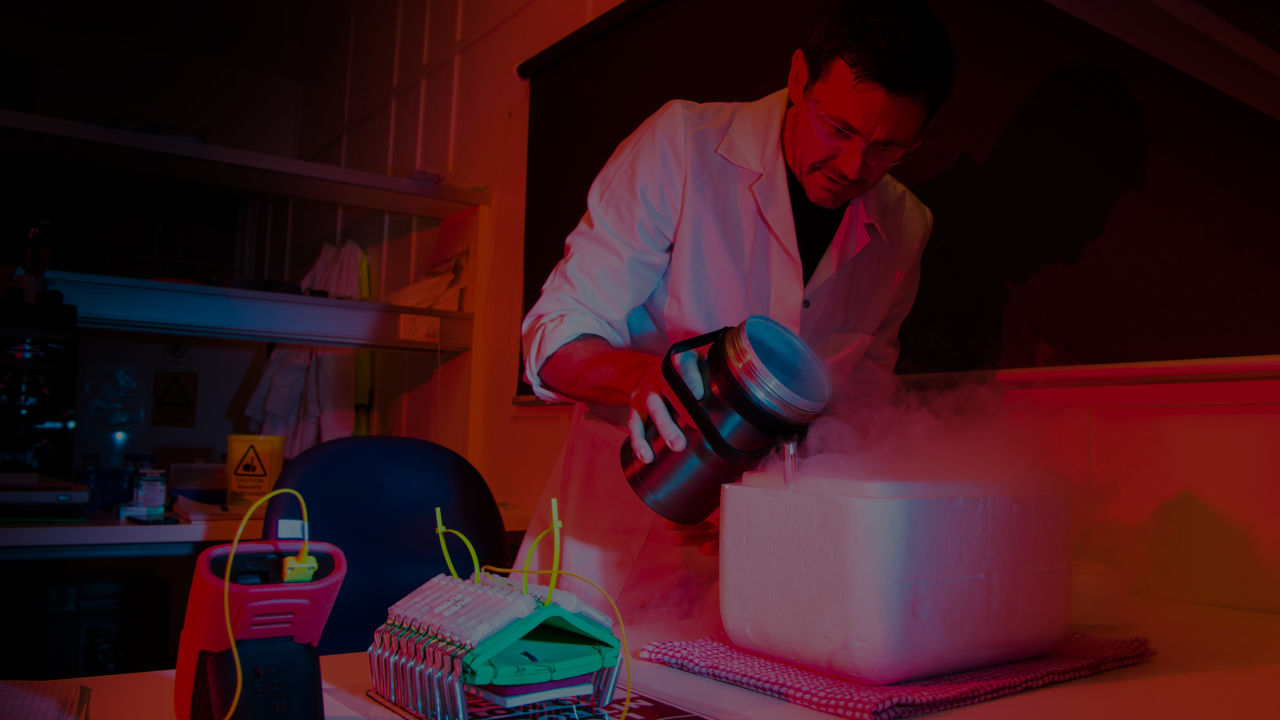Media Release ·
Freezing coral to help regrow the Great Barrier Reef

During the recent Great Barrier Reef coral spawning event in November, research biologists from Taronga Conservation Society collected billions of coral sperm samples to add to a bank of frozen coral housed in Dubbo, at Taronga Western Plains Zoo.
This ‘frozen zoo’, known as the CryoDiversity Bank, is where Taronga’s scientists are storing and caring for the coral cells until they are needed to reseed the reef – it is also the largest collection of frozen coral cell samples anywhere in the world.
“The CryoDiversity Bank is a crucial reserve for science and conservation,” says Dr Rebecca Hobbs, a Taronga reproductive biologist. “We have the potential to the use these samples far into the future to aid conservation efforts for the Great Barrier Reef.”
Working with the Australian Institute of Marine Science (AIMS), the Smithsonian Conservation Biology Institute and the Great Barrier Reef Foundation, Taronga’s team of biologists have attended five spawning seasons, with the aim to cryopreserve (freeze) sperm samples of keystone coral reef species (i.e those that are essential to reef structure and function).
This year, Taronga also partnered with research scientists from Southern Cross University in order to freeze species from a new site at the southern reaches of the Great Barrier Reef, on Heron Island.
“One of the important things about extending to the southern Great Barrier Reef is that it has not been impacted by recent bleaching events, unlike the central and northern Great Barrier Reef, so it is healthier and potentially more intact,” says Rebecca. “This is very important as it allows us to increase the quality and genetic diversity of samples within the Bank.”
While stationed at Heron Island in November, the researchers cryobanked 171 billion sperm, representing 31 individual coral colonies and eight coral species, five of which are new to Taronga’s Bank. The total number of coral species now housed at Western Plains Zoo in Dubbo is 16. For three of these species, Taronga has genetic samples from both the central and southern Great Barrier Reef.
“Following the field work, frozen samples are transported thousands of kilometres back here to Dubbo,” says Rebecca. “Once the samples arrive, we transfer them to secure storage containers containing liquid nitrogen at -196°C. At this temperature, metabolic processes cease and we can keep the cells frozen in this state indefinitely, and remove them for reef biodiversity restoration efforts as needed.
“Encouraging results from a recent study by our group showed that coral larvae produced from our cryobanked sperm samples develop normally, and have the same chance of reaching the settlement life stage [i.e. a juvenile coral] as those that come from fresh sperm,” Rebecca adds.
As well as the potential to aid in reef reseeding, Taronga’s living coral Bank is providing cells for studies that advance our understanding of coral biology and adaption to oceanic changes.
Great Barrier Reef Foundation Managing Director Anna Marsden welcomed news of the Heron Island research expedition’s success.
“There is no doubt that the Great Barrier Reef, and coral reefs globally, are facing a moment of truth from increasing threats to their survival,” Ms Marsden said.
“That’s why the Foundation is pleased to support scientists from the Taronga Conservation Society and Smithsonian Conservation Biology Institute this year to collect and freeze more Great Barrier Reef corals to help ensure their future.
“Expanding Taronga’s ‘frozen zoo’ – which already houses the world’s biggest coral cell collection – to include five new coral species this year is a great result and a tribute to this unique research collaboration which is stepping up to the challenge of protecting our reefs for future generations.”





